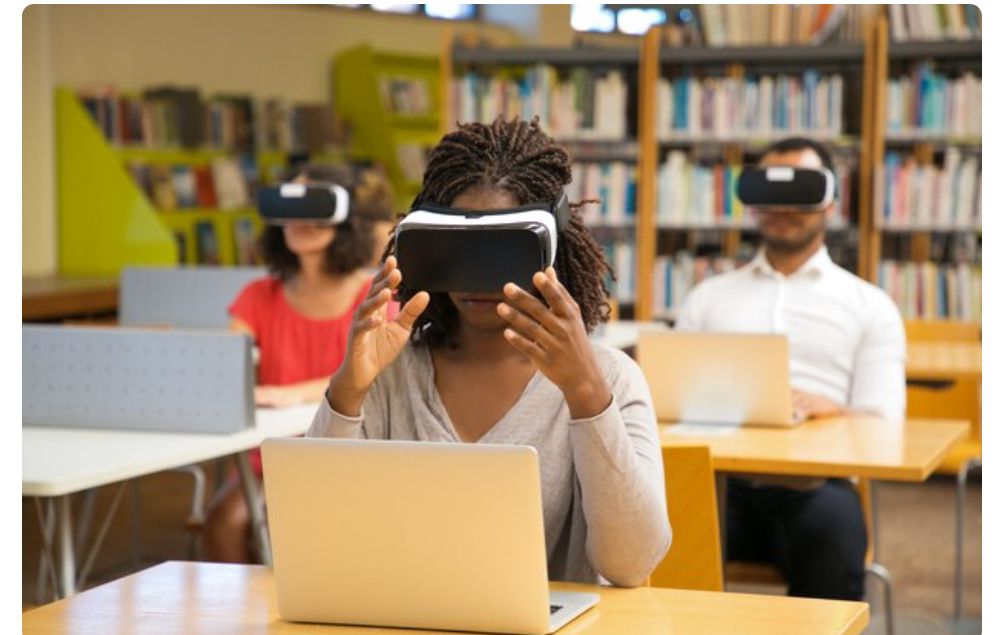In the rapidly evolving landscape of online education, Virtual Reality (VR) is emerging as a transformative tool that can revolutionize the way students learn. By creating immersive, interactive environments, VR technology has the potential to bridge the gap between physical and digital learning spaces, providing students with experiences that were once unimaginable in a traditional classroom setting. This article delves into the profound impact of Virtual Reality on online education and explores how this technology can enhance learning outcomes.

The Evolution of Virtual Reality in Education
Virtual Reality has come a long way from its origins in the gaming industry. Initially designed to create lifelike gaming experiences, VR has expanded into various fields, including healthcare, military training, and now education. The ability to simulate real-world environments and experiences in a controlled, safe manner makes VR an invaluable tool for online learning.
How Virtual Reality Enhances Online Education
- Creating Immersive Learning Environments
Description: Virtual Reality can transport students to different places and times, offering an immersive experience that enhances understanding and retention.
Application: Imagine a history lesson where students can walk through ancient Rome, exploring its architecture and culture firsthand. Or a biology class where students can dive into the human body and examine organs up close. VR makes these scenarios possible, providing a level of engagement that traditional methods can’t match.
Benefits: Immersive environments captivate students’ attention, making learning more engaging and memorable. They also provide a deeper understanding of complex subjects by allowing students to explore them in a hands-on manner. - Facilitating Interactive Simulations and Labs
Description: Virtual Reality enables the creation of interactive simulations and virtual labs, allowing students to conduct experiments and practice skills in a safe, controlled setting.
Application: For example, medical students can use VR to practice surgical procedures without the risks associated with real-life operations. Similarly, chemistry students can conduct experiments in a virtual lab, handling dangerous chemicals safely.
Benefits: VR simulations provide practical, hands-on experience without the associated risks or costs, making them an invaluable tool for subjects that require physical interaction and experimentation. - Enhancing Collaboration and Communication
Description: Virtual Reality can create collaborative virtual environments where students and teachers can interact in real-time, regardless of their physical location.
Application: Students can meet in virtual classrooms, work on group projects in shared spaces, or participate in virtual field trips together. Teachers can also use VR to hold office hours or provide personalized instruction in a more interactive setting.
Benefits: VR fosters a sense of presence and connection that’s often missing in online education. It allows for real-time interaction and collaboration, making it easier for students to work together and communicate effectively. - Supporting Diverse Learning Styles
Description: Virtual Reality caters to different learning styles by offering visual, auditory, and kinesthetic experiences.
Application: Visual learners can benefit from VR’s rich graphical environments, auditory learners from the immersive soundscapes, and kinesthetic learners from the ability to interact and manipulate virtual objects.
Benefits: By addressing multiple learning styles, VR ensures that all students can engage with the material in a way that suits them best, leading to better comprehension and retention. - Making Learning Accessible Anytime, Anywhere
Description: With Virtual Reality, learning is no longer confined to the classroom. Students can access VR experiences from anywhere, at any time.
Application: Students who miss a class can revisit the VR lesson at their convenience. Those who need extra practice can use VR simulations to reinforce their skills. This flexibility is especially beneficial for distance learning programs.
Benefits: VR provides flexibility and accessibility, allowing students to learn at their own pace and on their own schedule. This is particularly valuable for distance learners and those balancing education with other responsibilities.
Implementing Virtual Reality in Online Education
- Choosing the Right VR Platform
Considerations: Select a VR platform that aligns with your educational goals and technical capabilities. Popular platforms include Oculus, HTC Vive, and Google Cardboard, each offering different features and price points.
Tips: Evaluate the content library, ease of use, and compatibility with existing systems. Ensure the platform provides the types of VR experiences you aim to offer, whether they are simulations, virtual classrooms, or interactive lessons. - Integrating VR with Curriculum
Steps: Identify areas in your curriculum where VR can add value. Develop lesson plans that incorporate VR experiences as a complement to traditional teaching methods.
Tips: Start with pilot projects in specific subjects or units to gauge effectiveness. Collect feedback from students and teachers to refine your approach before broader implementation. - Providing Training and Support
Steps: Ensure that both teachers and students are comfortable using VR technology. Offer training sessions, tutorials, and ongoing support to address any technical challenges.
Tips: Create a support network or help desk to assist with technical issues. Encourage a culture of experimentation and learning, where both students and educators feel empowered to explore and use VR tools. - Ensuring Accessibility and Inclusivity
Considerations: Make VR experiences accessible to all students, including those with disabilities. Ensure that VR content is designed with inclusivity in mind.
Tips: Look for VR platforms that offer accessibility features, such as adjustable interfaces and compatibility with assistive devices. Develop inclusive content that reflects diverse perspectives and experiences. - Evaluating and Measuring Impact
Steps: Regularly assess the impact of VR on student learning and engagement. Use metrics such as student performance, feedback, and participation rates to evaluate effectiveness.
Tips: Conduct surveys and focus groups to gather qualitative data. Compare learning outcomes before and after implementing VR to measure its impact.
Challenges and Considerations
While Virtual Reality offers tremendous potential for online education, it’s important to be aware of the challenges. High costs, technical requirements, and the need for robust internet connectivity can be barriers to widespread adoption. Additionally, ensuring the safety and well-being of students in virtual environments is crucial. It’s important to establish guidelines and best practices to address these challenges effectively.
Conclusion
Virtual Reality is poised to play a significant role in the future of online education. Its ability to create immersive, interactive, and engaging learning experiences makes it a powerful tool for educators and students alike. By thoughtfully integrating VR into their teaching practices, educators can unlock new possibilities for learning and help students achieve their full potential.
As VR technology continues to evolve and become more accessible, its impact on education will only grow. Embrace the potential of Virtual Reality today and explore how it can transform your online learning experiences.
By leveraging the power of Virtual Reality, educators can provide students with unique and enriching learning experiences that go beyond the limitations of traditional education. Start exploring the possibilities of VR in your online classrooms and witness the transformation in student engagement and learning outcomes.










